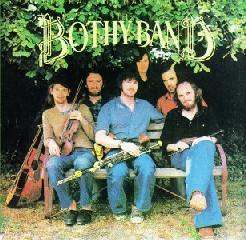 The early Seventies saw new musical liaisons being formed and as traditional
Irish music, contemporary folk, American and mid-European influences began
to coalesce, it seemed almost inevitable that a new sound would emerge.
[P.J. Curtis]
The early Seventies saw new musical liaisons being formed and as traditional
Irish music, contemporary folk, American and mid-European influences began
to coalesce, it seemed almost inevitable that a new sound would emerge.
[P.J. Curtis]
Three decades ago, traditional Irish music underwent a major face-lifting. Though the members of The Bothy Band parted company after five years only, Irish music was different after their demise. Because of their unique sound and tight playing, The Bothy Band has been hailed as a rock'n'roll band in folk clothing (Irwin) and their performances like being in a jet when it suddenly whipped into full throttle along the runway. Most of today's Irish music groups were unthinkable if it wasn't for the Bothies. Imagine: no Altan, no Dervish, no Lunasa! So praise the Lord and let us remember!
Irish traditional music has come a long way in the last three decades. In the
Seventies, certainly a vintage decade for the music and song, musicians with no
roots in traditional music began to take an interest in the music.
 The early Seventies saw new musical liaisons being formed and as traditional
Irish music, contemporary folk, American and mid-European influences began
to coalesce, it seemed almost inevitable that a new sound would emerge.
[P.J. Curtis]
The early Seventies saw new musical liaisons being formed and as traditional
Irish music, contemporary folk, American and mid-European influences began
to coalesce, it seemed almost inevitable that a new sound would emerge.
[P.J. Curtis]
The arrival of groups such as The Chieftains [-> FW#22] and Planxty [-> FW#27] - later to have a more viable successor in The Bothy Band - opened the music to an even younger audience. This new group involvement is the single greatest factor in the present international interest in Irish traditional music. It is because of this that musicians like Micho Russell can now sit alone on a stage in Germany and receive tumultuous applause for playing his tin whistle in his own pure style. [Micheal O Suilleabhain]
New group formations began to appear. Skara Brae [-> FW#5] had split, Micheal O Domhnaill joining forces for a time with singer-guitarist Mick Hanly to form Monroe. Micheal's sister Triona joined the little-known, short-lived but influential 1691, which harnessed the talents of Matt Molloy on flute, Peter Browne on pipes, Tommy Peoples on fiddle and Liam Weldon on vocals and bodhran. In 1973, Donal Lunny parted company with Planxty. [Curtis]
The Story
[Uilleann piper Paddy Keenan] began playing around Dublin with singers Micheal and Triona Ni Dhomhnaill. Fiddler Paddy Glackin then joined them followed by flute player Matt Molloy. Next came accordion player Tony MacMahon and then Donal Lunny. They called themselves Seachtar, the Irish word for seven. [Ronan Nolan]
The band, featuring Lunny on bouzouki, piper
Paddy Keenan, flautist Matt Molloy and fiddler Paddy Glackin had originally come
together to back accordionist Tony MacMahon on a series of RTE radio broadcasts.
Micheal and Triona O'Domhnaill (brother and sister) soon joined on guitar and
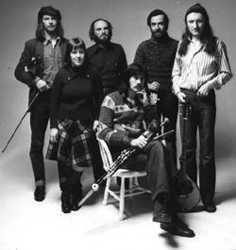 clavinet respectively. MacMahon soon departed to concentrate on TV/radio production,
and the band proper debuted in concert at Trinity College, Dublin, in February 1975.
[Colin Harper]
clavinet respectively. MacMahon soon departed to concentrate on TV/radio production,
and the band proper debuted in concert at Trinity College, Dublin, in February 1975.
[Colin Harper]
Micheal O Domhnaill had recently returned from Scotland, where he happened across a photograph taken in the 1890s of a group of tattered musicians. The Bothy Band, it was titled, in reference to the migrant Irish laborers who worked in England and Scotland and were housed in stone huts known as bothies. [Shamrock Irish Music]
By the end of the year Glackin had left to be replaced by the legendary Tommy Peoples, and it was this line-up that recorded "The Bothy Band 1975." [Harper]
Although The Bothy Band's concerts and recordings both contained their share of vocal highlights, often drawn from the vast store of Neilli Ni Dhomhnaill - the singer's aunt - they're remembered most vividly for their instrumental firepower, in an all-traditional repertoire of Irish and some Scottish tunes. The magnificent wildness and ferocity of Paddy Keenan's piping, the fiery verve of People's fiddle, and Molloy's supple, muscular flute meshed triumphantly with compellingly forceful yet fleet-footed rhythm work, in which Lunny's self-styled hacksaw bouzouki technique, fusing rhythmic attack with elements of harmony and counterpoint to generate extra lift, played a crucial role. [Geoff Wallis, Sue Wilson]
The front-line powerhouse trio of Keenan's pipes, Peoples' fiddle and Molloy's flute resulted in the release of an awesome and explosive musical energy that has rarely been equalled. Their devastating live concert appearances at home and abroad, coupled with their ground-breaking album releases, won scores of new fans for the Bothies. Many of these were rock or pop music lovers with no previous interest in, or indeed knowledge of, Irish traditional music. Witnessing the group live, in full spate, was an experience never be forgotten. Unquestionably, their innovative fire-brand approach to the music represented, as did Planxty's mixing of traditional and contemporary, a supreme example of the urbanisation of Irish rural music. It was music that moved artists such as Bob Dylan, Paul Simon and Emmylou Harris to seek out their albums and marvel at the band's instrumental firepower and declare themselves firm fans of the group. [Curtis]
At the same time, where Planxty had borrowed from a rock-band
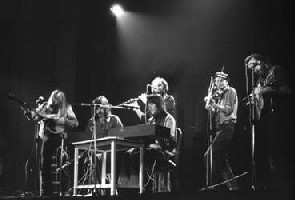 format in their arrangement of instruments within a band, the
Bothies went a stage further and harnessed the power of rock'n'roll
rhythms to traditional material and acoustic instrumentation.
[Wallis/Wilson]
format in their arrangement of instruments within a band, the
Bothies went a stage further and harnessed the power of rock'n'roll
rhythms to traditional material and acoustic instrumentation.
[Wallis/Wilson]
The Bothy Band were instantly lethal. You knew instinctively and immediately that here was a band on another planet to all the others. Hearing them for the first time was a bit on the where were you on the night Kennedy was assassinated? lines. [Colin Irwin]
The lead-instruments - fiddle, pipes and flute: they were raucous - the standard of playing was just incredible, and then the backing was so intense it was unbelievable. They were revolutionary in sound, yet the lead instruments were basically just playing straight, but they came with a fire in their belly. [Frankie Kennedy, Altan]
After a year of hectic road work, and scores of unforgettable live appearances in Ireland, Britain and Europe, Tommy [Peoples] and The Bothy Band parted company, with Kevin Burke stepping in as the band's fiddler. [Curtis]
Almost like an Irish trad version of The Yardbirds (with its role call of God-like instrumentalists in Clapton, Beck and Page), the Bothies can boast an equivalence in the trio of Glackin, Peoples and Burke. Peoples was (and is) celebrated for his fiery, agressive playing, in the Donegal style. He drifted off soon after the first record and his replacement couldn't have been more different. [Kevin] Burke had a mellow soul, and a role model in the great Michael Coleman. I like accuracy in playing and I like a good tone. I like sugar in my tea, but it's not important... The line-up released two further albums - "Old Hag You Have Killed Me" (1976) and "Out of the Wind, Into the Sun" (1977) - and a posthumous live set, "After Hours" (1979), recorded in Paris the previous year. With such a wealth of talent, profile and deep, traditional credibility the band was feted in its day as the only serious rivals to the rather more austere and perceptibly distant Chieftains. [Harper]
"Old Hag You Have Killed Me" (1976) aimed for rather greater diversity,
making resonant use of multivocal harmonies on the otherworldly "Fionnghuala",
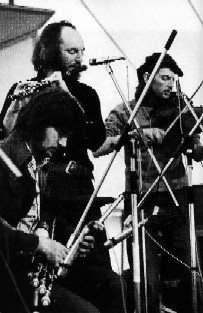 a nonsensical piece of Scots Gaelic mouth-music, and another Caledonian
borrowing, the sweetly mournful "Calum Sgaire", while also including three
further songs among the twelve tracks, and even a couple of slower instumentals.
[Kevin Burke's] highly ornamented, Sligo-derived style lending a marginally softer,
more melodious edge to the overall sound. [Wallis/Wilson]
a nonsensical piece of Scots Gaelic mouth-music, and another Caledonian
borrowing, the sweetly mournful "Calum Sgaire", while also including three
further songs among the twelve tracks, and even a couple of slower instumentals.
[Kevin Burke's] highly ornamented, Sligo-derived style lending a marginally softer,
more melodious edge to the overall sound. [Wallis/Wilson]
By the time their third album, "Out of the Wind, Into the Sun," was released, there was no doubt in anyone's mind that siblings Micheal O Domhnaill and Triona Ni Dhomhnaill, rhythm genius Donal Lunny, piping king Paddy Keenan, flute virtuoso Matt Molloy, and brilliant fiddler Kevin Burke stood at the very summit of Celtic music - a group admired by all, imitated by many, surpassed by none. [Green Linnet]
Ich befürchtete eine Art Aushängeschild für irische Musik, die mit der ursprünglichen irischen Musik nicht mehr viel gemein hat. Doch es folgte eine äußerst angenehme Enttäuschung: Zwar kann man das Programm der Bothy Band nicht mit dem konzertanten Auftritt der Chieftains vergleichen, doch habe ich noch nie (ohne Übertreibung) bei einem Folk-Konzert eine solche Mischung von Spielwut, Präzision und rhythmischer Dynamik erlebt! Getragen wird dieses rhythmische Feuerwerk vor allem von Gitarre und Bouzouki, die als Rhythmusinstrumente gegeneinandergesetzt sind, und einem geschickt eingesetzten elektrischen Clavinet, gespielt von der Sängerin der Gruppe, Triona Ni Dhomhaill, sowie Rhythmusverschiebungen, die die Musik im jazz-artigen Sinne swingen lassen. das Schwergewicht des Auftritts der Bothy Band lag auf Tanzmusik; zwischendurch hatte jedes Mitglied der Gruppe Gelegenheit, bei ausgedehnten Solostücken sein technisches Können unter Beweis zu stellen. [Klaus Ahlbrand, Gütersloh, Germany, 1977]
But all the fire in the world doesn't help a group of great artists plagued with managerial and financial problems. Side projects were beginning to creep in. By the end of 1978, the empire was crumbling. [Harper]
The Legacy
In many ways they were a forerunner of the world-music groups that are with
us today. Years after their demise, many still warmly recall the band's innovative
mixture of traditional material and modern-style arrangements, 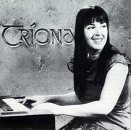 with elements of jazz, classical and rock, all performed in a sophisticated
and passionate style. [June Skinner Sawyers]
with elements of jazz, classical and rock, all performed in a sophisticated
and passionate style. [June Skinner Sawyers]
The Bothies were possibly the greatest of new Irish traditional groups that arose in the seventies. Their fire and brilliance has long outlasted their three year history and the four albums they produced are prized possesions of many celtic music lovers. [Ceolas]
Forgotten or foot-noted in the rock 'n' roll encyclopedias they may be, but the music and inspiration of The Bothy Band is very much alive today in the memories and repertoire of almost anyone who is anyone on the Irish traditional scene. While Planxty gained a rock audience through a fresh and vigorous approach to Irish folk music, The Bothy Band did likewise with the deeper wells of Celtic tradition. [Harper]
The Bothy Band who hit for the underbelly of traditional music playing with a hard aggression not before seen. They were the ones that fired the public's imagination and one could see the number of similar bands sprouting up all over the place. [John O'Regan]
The split of The Bothy Band quickly provided much talent for a new
generation of bands. Matt Molloy went off to The Chieftains by way of
a stint in the reformed Planxty, but the rest started new projects,
all of which made significant contributions to Irish music. Lunny
turned his attention to a signature band of the 1980s, Moving Hearts.
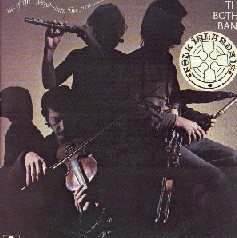 This was the most radical departure to date, combining traditional
tunes and instruments with saxophone, drums, keyboards and electric
guitar and bass in a potent fusion of traditional music, plus
contemporary and often politically controversial songs, and folk,
rock and jazz. The Domhnaills teamed up for an Irish-Scottish
family alliance with the virtuoso Cunningham brothers, John (fiddle -> FW#27)
and Phil (accordion -> FW#3,
FW#24), to form Relativity. Paddy Keenan concentrated
on his own projects, while Kevin Burke teamed up with Andy Irvine [-> FW#23],
Jackie Daly and Arty McGlynn to form in 1986 another of the Irish
music scene's finest bands, Patrick Street [-> FW#24]. [Kenny Mathieson]
This was the most radical departure to date, combining traditional
tunes and instruments with saxophone, drums, keyboards and electric
guitar and bass in a potent fusion of traditional music, plus
contemporary and often politically controversial songs, and folk,
rock and jazz. The Domhnaills teamed up for an Irish-Scottish
family alliance with the virtuoso Cunningham brothers, John (fiddle -> FW#27)
and Phil (accordion -> FW#3,
FW#24), to form Relativity. Paddy Keenan concentrated
on his own projects, while Kevin Burke teamed up with Andy Irvine [-> FW#23],
Jackie Daly and Arty McGlynn to form in 1986 another of the Irish
music scene's finest bands, Patrick Street [-> FW#24]. [Kenny Mathieson]
They gave the music another colour completely and sparked ideas off in everybody. I think The Bothy Band was the best thing ever! [Mairead Ni Mhaonaigh, Altan]
Line-up:
Peter Browne - Uilleann Pipes (1976, stand-in for Paddy Keenan)
Kevin Burke - Fiddle (1976-79)
Triona Ni Dhomhnaill - Vocals, Harpsichord, Clavinet, Harmonium, Electric Piano, Bodhran (1974-79)
Micheal O Domhnaill - Guitar, Vocals (1974-79) [-> FW#25]
Paddy Glackin - Fiddle (1974)
Paddy Keenan - Uilleann Pipes, Tin Whistle, Low Whistle (1974-79) [-> FW#23]
Donal Lunny - Bouzouki, Guitar, Bodhran, Synthesizer, Vocals (1974-79)
Tony MacMahon - Accordion (1974)
Matt Molloy - Flute, Tin Whistle (1974-79)
Tommy Peoples - Fiddle (1975) [-> FW#25]
Discography:
The Bothy Band (1975)
Old Hag You Have Killed Me (1976)
Out of the Wind, Into the Sun (1977)
After Hours - Live In Paris (1979)
Best of the Bothy Band (1983)
Live in Concert (1994)
Sources: Ceolas; Curtis "Notes from the Heart"; Green Linnet; Harper, liner notes from "The Bothy Band Live in Concert"; Mathieson "Celtic Music" [-> FW#20]; Ramblinghouse; Sawyers "The Complete Guide to Celtic Music"; Schuberth "CrossRoots"; Shamrock; Wallis/Wilson "The Rough Guide to Irish Music" [-> FW#27].
All material published in FolkWorld is © The Author via FolkWorld. Storage for private use is allowed and welcome. Reviews and extracts of up to 200 words may be freely quoted and reproduced, if source and author are acknowledged. For any other reproduction please ask the Editors for permission. Although any external links from FolkWorld are chosen with greatest care, FolkWorld and its editors do not take any responsibility for the content of the linked external websites.
